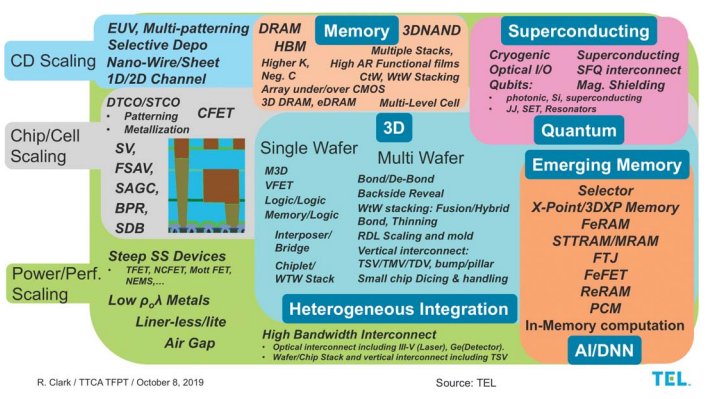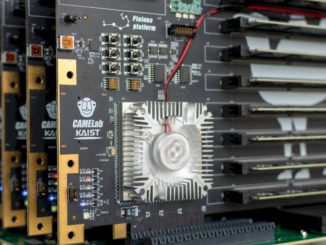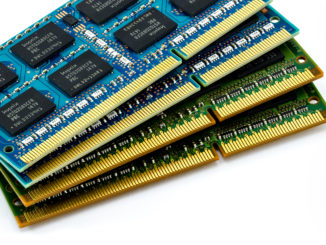
One could argue that the last few years have highlighted some of the most pressing semiconductor industry issues but there are challenges on the horizon well beyond current supply chain and silicon manufacturing bottlenecks.
If research hurdles are not addressed, the growing demands of data could put a damper on the “smart” world manufacturers, retailers, financial giants, energy, media, and other enterprises are banking on.
Those “five horsemen” that could signal a decline (or boost) in expectations include memory/storage, analog microelectronics, communication technologies, energy, and security in increasingly complex, interconnected systems.
This week, the Semiconductor Research Corporation (SRC) has issued a decade-spanning plan to identify and with partner DARPA, fund efforts those critical areas. Those five most pressing challenge areas SRC identifies (and which DARPA plans to back with its new JUMP 2.0 funding effort) are the following:
The growth of memory demands will outstrip silicon supply presenting opportunities for radically new memory and storage solutions.
Data storage demand is on an exponential curve but global silicon supply is not. This means revolutionary memory and storage technologies that are ultra-dense and energy efficient are critical. SRC says the grand goal for memory in the next decade is to develop new memories and fabrics with >10-100X density and energy improvements for each level of memory hierarchy. For storage, the goal is to develop storage technologies with 100X densities improvements.
For memory and storage, SRC recommends investments of $750 million annually throughout this decade in new trajectories for memory and storage.
Target areas for SRC and DARPA work on the memory front for edge, mobile, and IoT include innovations in DRAM (area scaling solutions and alternatives to 6T SRAM for on-chip memory) and NVM across the board. Other targets include research on flash below 28nm, dense 3D integration and memory technology-aware algorithms that can overcome write challenges (latency, endurance, energy consumption) challenges.
For datacenter in particular, the goal is to develop a “ubiquitous software framework that lowers the barrier to integration of new near-data processing elements and can optimize data placement and movement in the system. Further work in interconnects and standards (i.e., CXL) are also critical. SRC also cites architectural/design efforts that keep near-data computing in mind. On the emerging memory front, the idea of adding cache layers that allow for new memory technologies like MRAM, PCRAM and FeFET in addition ongoing work improving densities of SSD NAND and HDD.
SRC also calls for further exploration of DNA storage, including improving costs and capacity. There is also mention of tape as a continued area, particularly on the materials from with new materials including strontium ferrite and epsilon ferrite for additional densities.
Always available communication requires new research directions that address the imbalance of communication capacity vs. data generation rates.
The coming era of “always on” communication means the mismatch between communication capacity and data generation has to be reset. “A global storage-communication crossover is expected to happen around 2022, which will have a tremendous impact on ICT,” SRC says. This is the point when the data generated exceeds the world’s technological information storage and communication capabilities.
The grand challenge for the next decade is to advance communication technologies to enable moving around all stored data of 100-1000 zettabyte/year at the peak rate of 1Tbps at <0.1nJ/bit and develop intelligent and agile networks that effectively utilize bandwidth to maximize network capacity. SRC says this means a $700m investment annually throughout the coming decade.
The areas of impact are wide-ranging and include wireless communication techniques expanding to sub-THz region, wireless and wireline technologies interplay, new approaches to network densification, increasing importance of security, new architectures for mmWave, and device technology to sustain bandwidth and power requirements, packaging, and thermal control.
Among research areas are fundamental re-explorations of the underlying physics of communications, SRC says. This includes everything from leveraging bio-inspired mechanisms to looping in quantum technology and neural networks for communication power and capability optimization.
Emerging areas like mmWave are a key research theme for SRC with the goal of taking it from “hype to universal deployment.” There is much work to be done from developing massive MIMO systems with thousands of antennas to new materials. Photonics is also a key area of research (along with the memory/storage segment). Other topics include secure communications for IoT and edge and system-level optimizations.
Fundamental breakthroughs in analog hardware are required to generate smarter world-machine interfaces that can sense, perceive, and reason.
Analog electronics are a broad classification, which can include everything from communication, control, computation, and beyond. SRC identifies this microelectronics domain as critical for the next decade because all inputs humans can perceive are analog, making such devices key to world-machine interfaces that can reason based on ultra-compressed sensing capabilities and low power consumption.
“This extends to real-world interfaces such as communication channels (wired or wireless), machine and infrastructure sensing and control, as well as environmental diagnostics, and converting various sources of nature-produced energy to usable power.”
SRC suggests investments of $600 million annually over the next decade along key research themes including analog ICT systems, intelligent sensors, analog for machine learning in edge devices, and more device-oriented device design productivity and predictability.
Target areas for DARPA and SRC work include CMOS platform integration and package platform integration, refining power management and control, building more “sensing to action” platforms that use ML at the edge, building flexible platforms that holistically package sensors, memory, and signal representation, exploring silicon photonics for signal distribution, processing, and sensing, and developing methods that boost analog and mixed-signal simulations by 100X with “good enough” accuracy (approximate computing), among other areas.
Ever rising energy demands for computing vs. global energy production is creating new risk, and new computing paradigms offer opportunities with dramatically improved energy efficiency.
Little introduction is needed for this subject, especially given the rise in data demands coming in the next decade. According to SRC, the grand goal for the coming ten years is to “discover computing paradigms/architectures with a radically new computing trajectory that can demonstrate >1,000,000X improvement in energy efficiency.”
SRC adds that changing this trajectory “not only provides immediate improvements but also provides many decades of growth potential. This would be much more cost-effective than attempting to dramatically increase the world’s energy supply.” This area requires a $750m annual investment over the next decade.
The opportunities to change the landscape are ripe throughout the stack and interplay with other research areas defined by SRC. The following graphic from TEL sums it up nicely, at least at the computing architecture level:
Research focal areas for the next decade include emerging concepts in architecture, including high-dimensional computing, Shannon-inspired statistical computing, ultra-heterogeneous computing (specialized accelerators) as well as exploring new interconnects and fabrics (spintronics, photonics, for example). Other areas include exploring completely novel approaches to computing, including quantum, neuromorphic, and more refined AI-driven methods of solving problems.
Breakthroughs in hardware research are needed to address emerging security challenges in highly interconnected systems and AI.
Security is one of the trickiest and most all-encompassing challenge areas for the next decade but SRC is limiting its focus on the hardware/device side. This includes everything from sensors, processors, actuators and power devices and how those interact with software, networks/cloud, and existing cryptography approaches. At stake is security for a number of domains, from consumer, automotive, healthcare, aerospace, defense, financial, and beyond.
The grand challenge, according to SRC, is to spend the next decade developing security and privacy advances that keep pace with new threats and technologies. Examples include trustworthy and safe autonomous and intelligent systems, secure future hardware platforms, and emerging post-quantum and distributed cryptographic algorithms.
This area will require $600m annually throughout the decade, SRC projects.
On the hardware research horizon they recommend exploring hardware future-proofing and security maturity signoffs required before devices tape out. At the design level too are explorations of NVM systems are particularly vulnerable and synthesizing RTL for guaranteed hardware-level security against known attacks.
Secure computing research topics include building single-chip secure processors, developing threat models, documenting the co-design “contract” for microarchitecture properties as they relate to security. AI is another critical element in security research for the next decade with a better understanding of the complexity of interconnected AI systems and use of emerging security tools to keep each step of the process secure and robust.
More detail about these five research frontiers, which add up to $3.4 billion annually, can be found via the full report.






Be the first to comment